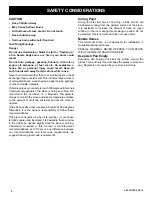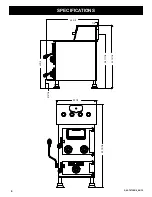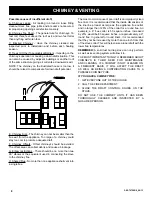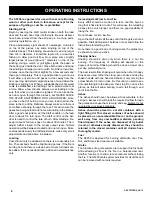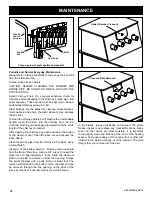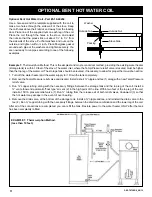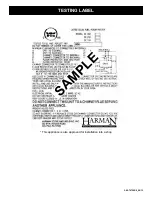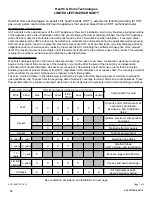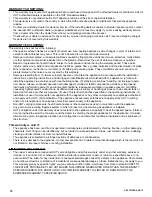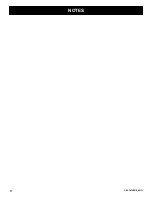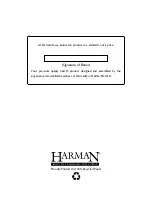
7
3-90-70738R9_08/13
ChImNEY & vENTINg
Types Of Chimneys
The chimney is one of the most important, yet most
neglected and misunderstood portions of any solid fuel
burning stove installation. Do not connect this stove to a
chimney flue serving another heating device.
THE STOVE MUST BE CONNECTED TO ITS OWN
TILE-LINED FLUE. A MINIMUM FLUE SIZE OF 8” X 8” IS
NECESSARY FOR PROPER OPERATION.
UNDER NO CIRCUMSTANCES SHOULD A MANUAL
FLUE DAMPER BE INSTALLED IN THE SMOKE PIPE
BETWEEN THE STOVE AND THE CHIMNEY.
NO DAMPER, HEAT SAVER OR AUTOMATIC VENT
DAMPER DEVICE SHOULD BE INSTALLED IN OR ON
THE SMOKE PIPE.
CAUTION: THE CHIMNEY MUST BE A CLASS “A”
CHIMNEY, IN GOOD OPERATING AND CLEAN
CONDITION.
NOTE: THE USE OF ALUMINUM TYPE “B” GAS VENT
FOR SOLID FUELS IS UNSAFE AND PROHIBITED BY
THE NATIONAL FIRE PROTECTION AGENCY CODE.
There are three types of class “A” chimneys:
1. Masonry with tile liner, to include brick or stone. It must
be supported on grade level foundation.
2. Insulated, manufactured chimney, listed or certified by a
national test agency.
3. Triple-wall metal class “A” chimney, listed or certified by
a national test agency.
If your masonry chimney has not been used for some time,
have it inspected by a qualified person. If a listed or certified
manufactured chimney is to be used, make certain it is
installed in accordance with the manufacturer’s instructions
and all local and state codes.
The minimum recommended height for solid fuel chimneys
is 16 feet from the stove collar. The chimney must be two
feet higher than anything within ten feet. It also must extend
three feet above the point where it intersects or exits the
roof line.
In order to have a properly operating solid fuel heating
system, the chimney must be capable of providing the
necessary draft. The minimum required draft is .06 inches of
water column (W.C.). This must be measured using a draft
gauge. If the chimney cannot supply this constant draft, the
stove will not operate properly. A barometric damper may
be used and properly adjusted to compensate for excessive
draft only.
IMPORTANT: When you measure the the draft, the stove
must be operating with sufficient time given for the stove
and chimney to warm. Burn for at least thirty minutes. The
draft reading is best taken 18” up from the center of the flue
outlet, in the connector pipe. Drill a hole in the pipe for the
meter tube, and fill it with a screw or silicone when done
with the test.
IMPORTANT: The connector pipe must be 24 gauge or
thicker.
When connecting the flue pipe to the stove, the first section
should be installed inside the stove collar. It should be
secured to the collar with, at least, three screws or rivets.
Do not pass the connector pipe through a wall or ceiling
without first checking with your local codes. If allowed, use
only approved pass-thru methods.
NOTE: All horizontal runs of venting should have a 1/4 inch
of rise per foot of length.
Use no more than two 90° elbows in the connector. If a
barometric damper is needed, to compensate for excessive
draft, install it only in a vertical section of vent pipe.
The three foot, two foot, ten foot rule
More than 10 Ft. (3 m)
10 Ft. (3 m)
2 Ft. (.6 m) Min
Height necessary
above any roof surface
within 10 Ft. (3 m)
3 Ft. (.9 m) minimum
above exit point
Ridge
Chimney
Summary of Contents for SF 250
Page 17: ...17 3 90 70738R9_08 13 notes...



